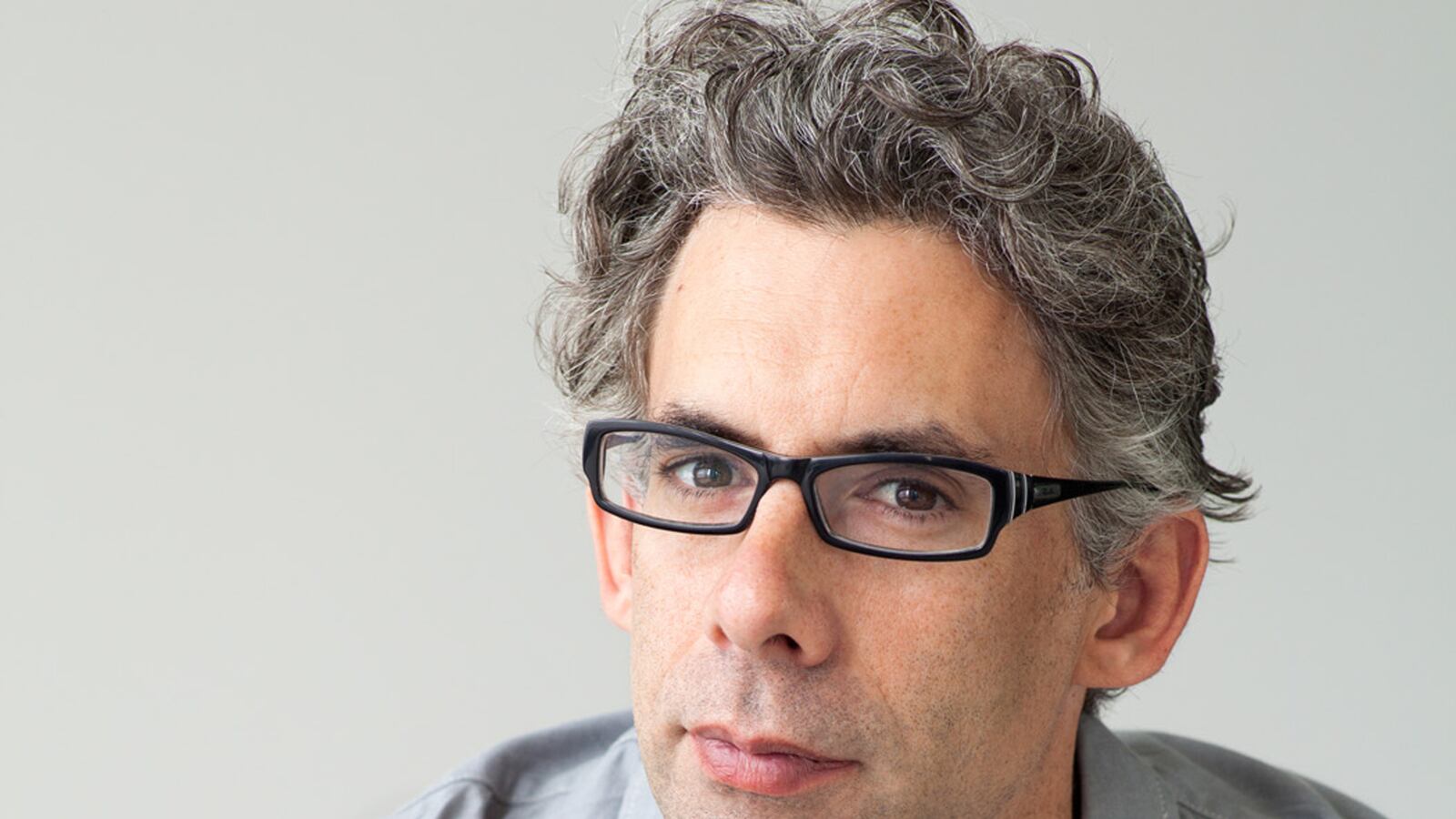Remember Me Like This, set in Corpus Christi in south Texas, is a mystery, a page-turning thriller, a poignant novel about loss, a moving family story and a fresh, fascinating look at American history. By beginning the story of a kidnapped boy with his return to his family, Johnston reveals the complexity of our losses and our recoveries, the way a change for one is a change for all, the limits of our love for our children, and the way that love can be expanded beyond those limits. I have known Bret for a few years—we both teach in the Bennington College MFA program—but I was astonished and thrilled by this book. I wanted to ask him how he did it, and he told me.

Susan Cheever: Your book has the delicate and precise mechanics of a Swiss watch. Every scene fits together like a jigsaw puzzle piece by the end of the book, when the reader finally knows everything. The flow of information is perfectly calibrated. How did you do that? Did you write outlines use index cards keep it all in your head?
Bret Anthony Johnston: I wrote the first draft of the novel without rereading a word of it until I reached the end, then I went back and cut and cut and cut. The second draft was half as long as the first, but I still feel as though I needed those hundreds of pages of shoddy writing to find the book that would eventually be published and reward the reader’s attention. The imagination is necessarily irresponsible, and I’ve never had an interest in trying to corral it. Anytime the characters went in a direction I didn’t expect, I felt shot through with adrenaline. The book ends far differently than I thought it would, and that surprise seems worth every narrative dead end that I encountered and had to revise along the way.
So I never outlined in the early drafts, but once I had a sense of what the novel’s ideal arc would be, I erected a huge bulletin board in my office and tracked what the readers and individual characters knew at a given time. Each character had his or her own color of ink, so I could assess the novel holistically, judging where I needed more of, say, the mother character because there wasn’t enough of her color in the third section of the book. So, yes, when I’m generating material, when I’m writing those initial drafts, I want my imagination to be messy and irresponsible, but when I’m revising, I want the process to be pragmatic and rigorous. I made notes of how long it had been since we’d seen the postcard, heard from certain characters, gone to the demolished pool. Anything less methodical would seem like malpractice to me. Readers have so many other things vying for their attention and I take their interest and investment as a rare gift, so I work diligently in revision to assure them they’re not alone in this experience.
The captivity narrative is one of the great strains in American literature. From Mary Rowlandson, who was captured by New England tribes in 1695 and who wrote A Narrative of the Captivity and Restoration of Mrs. Mary Rowlandson, to Elizabeth Smart’s My Story, the captivity narrative has brought up questions about family, about the definition of civilization and about the effect of environment. In the book you refer to a Texas captivity narrative, the 19th-century Texas kidnapping of Cynthia Ann Parker, which was the basis for the movie The Searchers and which your father character, Eric Campbell, works into his history classes. Why do these narratives electrify us? Did you read other captivity narratives to prepare for writing this one? What do you like about them? What do they teach us?
I’ve read most of them by now, and I would like to believe that Remember Me Like This contributes something to the subject. In fact, one of the reasons that I found the family’s perspectives so fascinating was because there isn’t much about the victim’s families in the collective literature. The focus has almost exclusively been from the victim’s point-of-view, and there are very few narratives that extend beyond the moments after the initial return. There’s a void in the literature, a blind spot, and the more I empathized with the characters, the more I saw the opportunity to shine a light onto lives that have so far been in the dark. The collateral story hadn’t been explored, which shocked and exhilarated me. I’ve always been interested in characters on the periphery.
Regardless of whether the narrative focuses on the victim or the victim’s family, I think the stories interest us because they tap into any number of primal desires. We want to believe that we’ll be reunited with people who’ve gone missing in our lives. We want to believe that we can find our ways home, that what was lost can be found, that the devastation of the past will give way to the dreamed-for future. If you’ve lost someone you love, you long for resurrection, and at their core, these are stories of rebirth. They’re stories of symmetry and hope, of closure and faith and resilience, and they invite an urgent kind of empathetic participation that few others do. What parent hasn’t imagined losing their child? You wonder if you could survive the long waiting, the hideous speculation, the grueling labor of carrying on. You fantasize about the day the child is returned to you, how you would make good on all of your previous failings. The child, of course, is doing the same thing. But again, I couldn’t find any narratives that followed the family too far beyond its reunification, and I became more and more interested in the aftermath of the captivity. I couldn’t find any fiction that engaged the captivity narrative of those left behind, and it seemed an interesting and worthwhile story to tell.
What inspired you to write this book? Where did the idea come from? Are there captivity narratives in all of our lives?
There is loss in all of our lives and it holds us captive. I think we look for ways to escape and for places to take shelter, just as the characters do in the book. Whether those pursuits are healthy or harmful, whether they’re successful or familiar, I think we recognize the futility of the struggle. Most people have drawn lines in their memories, a threshold that demarks before and after, and thinking about the novel now, I see that one of its concerns is the aggressiveness of that line. The characters seem trapped on either side of the line at different points in the novel, held hostage by their desire to return to the old life, and they always feel an inch away from what they want. For better or worse, it’s an emotion that most people will recognize.
But none of that was on my mind when I started writing the book, not even close. It started with a beach ball and a sick dolphin. When I was much younger, I volunteered to help rehabilitate a dolphin that had beached in South Texas—much in the same way that Laura does in Remember Me Like This. I always wanted to sign up for an overnight shift—I didn’t have much of a social life then, so spending a night in a humid warehouse with a dolphin in the bad part of town seemed perfect—but the shifts were never available. For years, I wondered who had signed up for all of the slots, and eventually a character started to crystallize in my imagination. I thought of a woman who had insomnia for some reason, and I remembered that there was a beach ball in the pool with my dolphin, so I imagined that this insomniac had brought that in for the dolphin. Then it occurred to me that it’s usually children who blow up beach balls, not the parents, but I’d never conceived of this woman having a son. That’s when everything clicked. I realized that it was her son’s breath in the beach ball, and the reason she couldn’t sleep was because her son was missing. She was trying to save the dolphin because she’d failed to save her boy. I changed the beach ball to an inflatable alligator and started writing the story to find out what would happen next.
The opening of the book, when Laura and Eric Campbell are told that the police may have their son Justin, is almost unbearable with suspense. But the real suspense of the narrative is not about the story of a lost boy found, but rather about the story of the way people adapt to unbearable circumstances. Can you say something about this?
Suspense fascinates me, and the notion of being suspended between two points—before and after, lost and found, elation and agony—resonated more and more the deeper I got into the story. I wanted the reader to care about what happened next, to worry and hope, and I wanted the suspense to feel revelatory, rewarding. In many ways, the novel is preoccupied with where characters take shelter and how long those shelters will endure when the storm comes. So, if I’ve done my job, there should be two engines of suspense, narrative and emotional. With the narrative suspense, I’m hoping the reader will wonder if the shelters will hold up once the shingles start to fly off the roof and walls start to splinter. With the emotional suspense, the hope is that you’ll be interested in who the characters will be revealed to be when they’re left trembling in the middle of the storm. What will we learn about them that we couldn’t learn when they were safe? Who are we surprised to recognize in their vulnerabilities, in their resolve? Of course, the real hope is that the readers will recognize themselves. That’s why we read—and it’s why I write—to find someone—you—on the page that you haven’t seen in a long, long time. See? It all comes back to that, a longing to be found and delivered home. At least for me it does.






